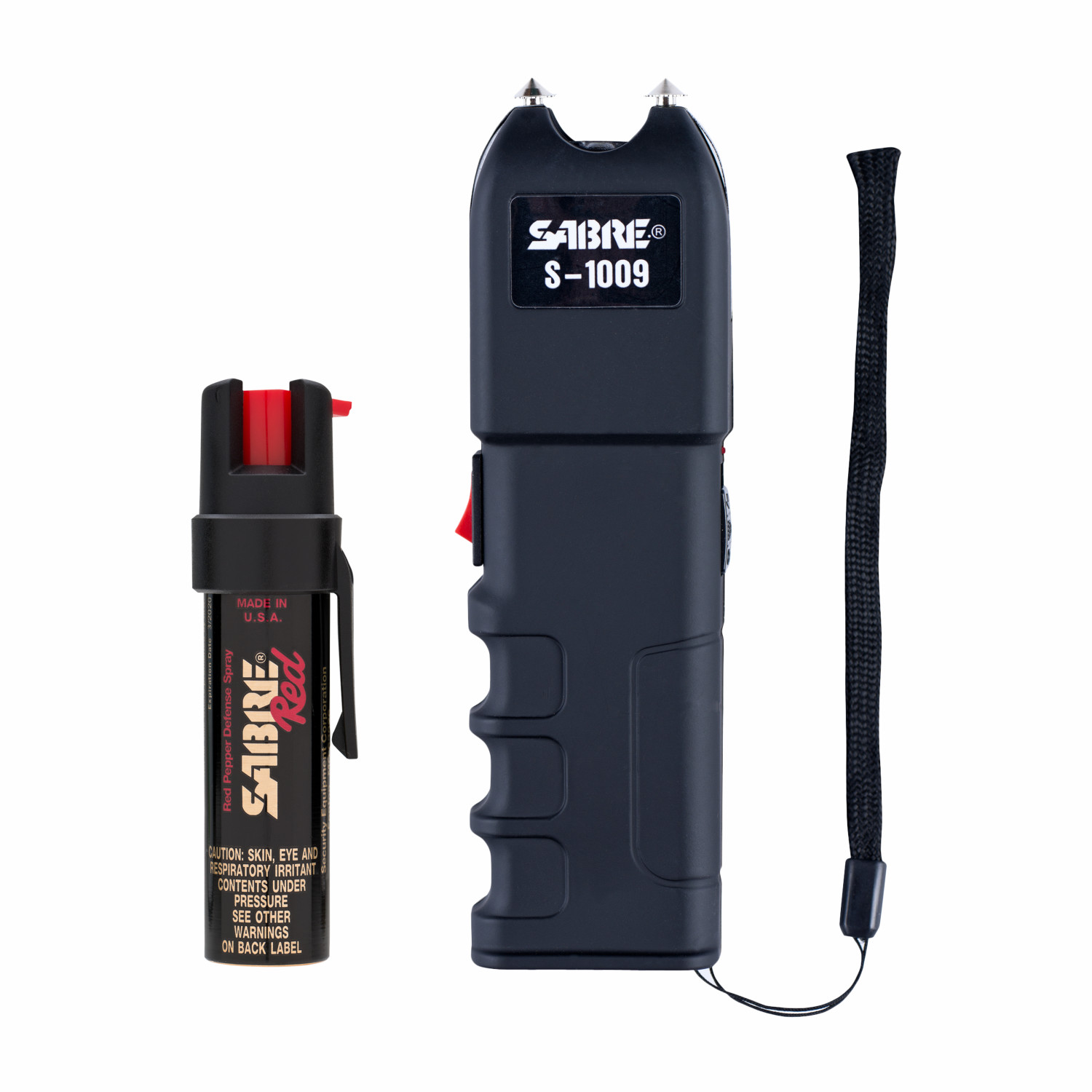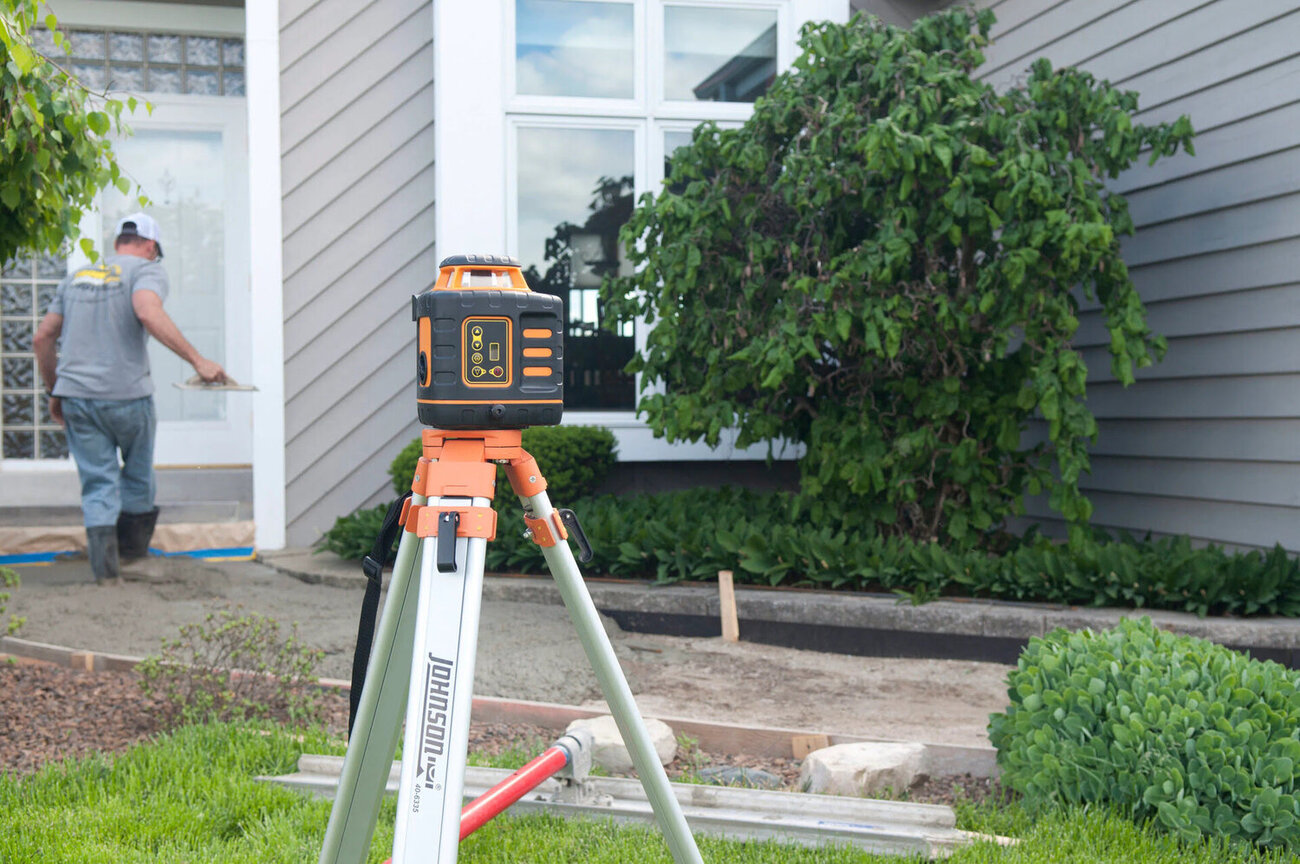Home>Home Security and Surveillance>Which Style Of Laser Is Preferred For Home Defense


Home Security and Surveillance
Which Style Of Laser Is Preferred For Home Defense
Modified: September 1, 2024
Looking to enhance your home security and surveillance? Discover the preferred style of laser for top-notch home defense.
(Many of the links in this article redirect to a specific reviewed product. Your purchase of these products through affiliate links helps to generate commission for Storables.com, at no extra cost. Learn more)
Introduction
Welcome to the world of home security and surveillance, where laser technology has become an increasingly popular choice for protecting your most cherished belongings and loved ones. In this article, we will explore the different types of lasers used for home defense, their pros and cons, and help you gain a better understanding of which laser style may be the best fit for your specific needs.
Gone are the days when home security relied solely on locks and alarms. With advancements in technology, laser-based systems have emerged as a highly effective and reliable solution for safeguarding your property. Whether you’re concerned about deterring potential intruders or simply want to stay informed about any unauthorized access, lasers can provide an added layer of protection.
There are three primary laser colors used in the field of home defense: red, green, and blue. Each color offers unique advantages and limitations, and understanding the differences between them is crucial in making an informed decision.
Before delving into the pros and cons of each laser color, it’s important to note that laser technology is not solely limited to traditional lasers. Today, there are also laser-based systems that utilize monochromatic LED lights, which simulate the appearance of lasers without the associated risks. These systems offer similar benefits, but for the purpose of this article, we will focus on the traditional laser types.
Without further ado, let’s explore the strengths and weaknesses of red, green, and blue lasers for home defense.
Key Takeaways:
- Choose green lasers for better visibility and accuracy in home defense, but be prepared for higher costs and power requirements.
- Consider red lasers for affordability and longer range, but be aware of limited brightness and potential legal restrictions.
Read more: Which Caliber Is Best For Home Defense
Types of Laser for Home Defense
When it comes to home defense, there are three primary types of lasers to consider: red lasers, green lasers, and blue lasers. Each laser color offers different characteristics and has its own advantages and disadvantages.
Red Lasers:
Red lasers are the most commonly used lasers for home defense due to their affordability and accessibility. They emit a wavelength of around 650-660 nanometers, making them highly visible in low-light conditions. Red lasers have a relatively long range and can be easily seen by the naked eye, which can act as a deterrent to potential intruders.
However, one drawback of red lasers is their limited brightness compared to green and blue lasers. They may struggle to remain visible in bright outdoor settings or when there is significant ambient lighting. Additionally, because of their longer wavelength, red lasers may have a larger beam diameter, which can decrease their accuracy over long distances.
Green Lasers:
Green lasers have gained popularity in recent years due to their increased brightness and visibility. They emit a wavelength of around 532 nanometers, which is closer to the peak sensitivity of the human eye. This makes green lasers easily detectable even in bright outdoor environments.
Green lasers have a longer range compared to red lasers, allowing for more precise targeting at greater distances. They also tend to have a narrower beam diameter, contributing to their accuracy. However, green lasers can be more expensive than red lasers and may require more power to operate effectively.
Blue Lasers:
Blue lasers, with a wavelength of around 450-460 nanometers, offer the highest level of brightness and visibility among the three laser colors. This makes them ideal for outdoor use, even in broad daylight. They provide a highly visible and intense beam, ensuring a strong deterrent effect.
However, blue lasers typically have a shorter range compared to red and green lasers. They may also require a higher power source to achieve the desired level of visibility. Additionally, blue lasers can be more costly and less readily available than red and green lasers.
It’s worth noting that different laws and regulations may govern the use of lasers in home defense, depending on your jurisdiction. It’s important to familiarize yourself with these regulations and ensure compliance when considering laser technology for your home security system.
Now that we’ve explored the different types of lasers for home defense, let’s take a closer look at the pros and cons of each laser color.
Pros and Cons of Red Laser
Red lasers, despite being the most common choice for home defense, have their own set of pros and cons that you should consider before making a decision.
Pros:
- Accessibility and affordability: Red lasers are widely available and tend to be more affordable compared to green and blue lasers, making them a popular choice for homeowners on a budget.
- Visibility in low-light conditions: Red lasers emit a wavelength of around 650-660 nanometers, making them highly visible in low-light environments. This can be particularly advantageous for indoor security purposes.
- Longer range: Red lasers generally have a longer range compared to green and blue lasers, allowing you to cover larger areas and maintain visibility over greater distances.
- Ease of use: Red lasers are straightforward to operate. They can be easily mounted on firearms, home surveillance systems, or even handheld devices for added convenience.
- Deterrent effect: The visibility of the red laser beam can serve as a powerful deterrent, alerting potential intruders to the presence of surveillance systems and discouraging them from proceeding with their nefarious intentions.
Cons:
- Limited brightness: Red lasers may struggle to remain visible in bright outdoor settings or when there is significant ambient lighting. This can potentially affect their effectiveness, particularly in situations where high visibility is crucial.
- Decreased accuracy over long distances: Due to their longer wavelength, red lasers may have a larger beam diameter, which can decrease accuracy when targeting objects or individuals at long distances.
- Potential legal restrictions: Depending on your jurisdiction, there may be certain legal restrictions regarding the use of lasers for home defense. It’s important to familiarize yourself with local regulations to ensure compliance.
While red lasers offer several advantages for home defense, it’s important to assess how their limitations align with your specific security needs. Now, let’s move on to exploring the pros and cons of green lasers.
Pros and Cons of Green Laser
Green lasers have gained popularity in the realm of home defense due to their increased brightness and visibility compared to red lasers. However, like any technology, green lasers come with their own set of pros and cons that should be considered.
Pros:
- Enhanced brightness and visibility: Green lasers emit a wavelength of around 532 nanometers, which is closer to the peak sensitivity of the human eye. This increased visibility makes green lasers highly effective in both indoor and outdoor environments, even in broad daylight.
- Longer range and increased accuracy: Green lasers have a longer range compared to red lasers, allowing for more precise targeting at greater distances. They also tend to have a narrower beam diameter, contributing to their accuracy.
- Deterrence factor: The bright and highly visible green laser beam can serve as an effective deterrent, alerting potential intruders to the presence of surveillance systems and discouraging them from proceeding with their nefarious intentions.
Cons:
- Higher cost: Green lasers can be more expensive than their red laser counterparts. The increased brightness and visibility come at a higher price point due to the complexity of the technology.
- Power requirements: Green lasers often require more power to operate effectively, which can result in larger and more cumbersome power sources or reduced usage time compared to red lasers.
- Legality and regulations: As with any laser-based systems, there may be legal restrictions on the use of green lasers for home defense in your jurisdiction. It’s crucial to understand and comply with these regulations.
When considering green lasers for home defense, weigh the added brightness and visibility against the cost and power requirements to determine if they align with your specific security needs. Now, let’s move on to examining the pros and cons of blue lasers.
When considering a laser for home defense, a green laser is preferred over red because it is more visible in various lighting conditions and has a longer range.
Pros and Cons of Blue Laser
Blue lasers, known for their high brightness and visibility, offer unique advantages and considerations when it comes to home defense. Let’s explore the pros and cons of using blue lasers for protecting your property.
Pros:
- Superior brightness and visibility: Blue lasers emit a wavelength of around 450-460 nanometers, providing the highest level of brightness and visibility among the three laser colors. This makes blue lasers ideal for outdoor use, even in broad daylight.
- Intense and visible beam: The intense blue laser beam is highly visible and can serve as a strong deterrent, alerting potential intruders to the presence of surveillance systems and discouraging them from proceeding with their unlawful activities.
- Ease of detection: Blue lasers are easily detectable by the human eye, ensuring a strong visual impact and enhancing the overall effectiveness of your home security system.
Cons:
- Shorter range: Blue lasers typically have a shorter range compared to red and green lasers. This limitation may impact their applicability for long-range or large-area surveillance.
- Higher cost: Blue lasers tend to be more costly and less readily available compared to red and green lasers. The increased brightness and visibility come at a higher price point due to the complexity of the technology.
- Potential power requirements: Blue lasers may require a higher power source to achieve the desired visibility, which can result in larger power supplies or reduced usage time compared to other laser colors.
Consider your specific home defense needs and budget when evaluating the pros and cons of blue lasers. While they offer excellent visibility and a strong deterrent effect, the shorter range and higher cost are important factors to take into account.
Now that we have explored the pros and cons of red, green, and blue lasers for home defense, let’s move on to comparing these laser styles and considering the factors that you should take into consideration when choosing the ideal laser for your home security system.
Read more: Which Rifle Is Best For Home Defense
Comparison of Laser Styles for Home Defense
Choosing the right laser style for your home defense system is crucial in ensuring optimal security and protection. Let’s compare the different laser styles – red, green, and blue – and examine their key characteristics to help you make an informed decision.
Visibility:
One of the primary factors to consider is the visibility of the laser beam. Green and blue lasers offer superior visibility compared to red lasers. Green lasers, with their wavelength closer to the peak sensitivity of the human eye, are highly visible in various lighting conditions, including bright outdoor environments. Blue lasers, being the brightest, provide excellent visibility even in broad daylight, making them ideal for outdoor security applications.
Range and Accuracy:
When it comes to range and accuracy, green lasers tend to outperform red lasers. Green lasers have a longer range and narrower beam diameter, allowing for more precise targeting at greater distances. Red lasers, on the other hand, have a longer range compared to blue lasers but may have a larger beam diameter, which can affect their accuracy over long distances. Blue lasers, although highly visible, may have a shorter range compared to both red and green lasers.
Cost:
In terms of cost, red lasers generally have the lowest price point, making them a popular choice for budget-conscious homeowners. Green lasers are typically more expensive due to their enhanced visibility and longer range. Blue lasers, being the most powerful and brightest, often come with the highest price tag. It’s important to consider your budget and weigh it against the specific benefits each laser style offers.
Power Requirements:
Power requirements can vary among the different laser styles. Green and blue lasers may require more power to operate effectively, which can result in larger and more cumbersome power sources or reduced usage time compared to red lasers. It’s essential to consider the power source availability and the impact it may have on the overall functionality of your home defense system.
Legality and Regulations:
Keep in mind that the use of lasers in home defense may be subject to legal restrictions in your jurisdiction. It’s crucial to familiarize yourself with local laws and regulations regarding laser use and ensure compliance to avoid any potential legal complications.
Ultimately, the choice of laser style for your home defense system will depend on your specific security needs, budget, and the regulatory landscape in your area. Consider the visibility, range and accuracy, cost, power requirements, and legal considerations when making your decision.
Now, let’s explore other important factors to consider before choosing the ideal laser for your home security system.
Factors to Consider in Choosing a Laser for Home Defense
Choosing the right laser for your home defense system involves considering several important factors. By evaluating these factors carefully, you can ensure that the laser you select meets your specific needs and provides effective security for your home. Here are some key considerations to keep in mind:
1. Purpose:
Determine the specific purpose of your laser. Are you looking for a deterrent to scare off potential intruders, or do you require a laser for precise targeting and identification? Understanding your purpose will help you choose the appropriate laser style and features.
2. Visibility:
Consider the level of visibility you need for your laser. Green and blue lasers offer superior brightness and visibility compared to red lasers, especially in bright outdoor environments. Assess your security needs and determine which level of visibility is essential for your situation.
3. Range and Accuracy:
Evaluate the range and accuracy requirements for your home defense system. Green lasers generally offer longer ranges and greater accuracy compared to red and blue lasers. Consider the size of your property and the distances you need to cover when choosing a laser with the appropriate range and precision.
4. Budget:
Set a budget for your laser system. Red lasers are typically the most affordable option, followed by green lasers, which can be more expensive due to their enhanced features. Blue lasers tend to have the highest price point. Determine how much you are willing to invest in your home defense system and select a laser within your budget.
5. Power Requirements:
Consider the power requirements of the laser. Some lasers may require more power to operate effectively, which can impact battery life or necessitate larger power sources. Ensure that you have the necessary power supply or evaluate if the trade-off between power and performance is acceptable for your needs.
6. Compliance with Laws and Regulations:
Research and understand the legal regulations regarding laser use in your jurisdiction. Different areas may have restrictions on laser power, beam visibility, or specific permits required for legal use. Comply with these regulations to ensure you are using your laser system lawfully.
7. Compatibility:
Consider the compatibility of the laser with your existing home security system or firearms. Ensure that the laser can be easily integrated and mounted on your chosen devices without requiring extensive modifications or additional accessories.
By carefully evaluating these factors, you can make an informed decision when choosing a laser for your home defense system. Take into account the purpose, visibility, range and accuracy, budget, power requirements, regulatory compliance, and compatibility to select a laser that suits your specific needs and enhances the security of your home.
Now that we’ve covered the factors to consider, let’s summarize the key points and conclude our exploration of lasers for home defense.
Conclusion
When it comes to home defense, laser technology offers a versatile and effective solution for protecting your property and loved ones. By understanding the different types of lasers and considering their pros and cons, you can make an informed decision that aligns with your specific security needs.
Red lasers, with their affordability and accessibility, are a popular choice for budget-conscious homeowners. They provide good visibility in low-light conditions and have a longer range compared to green and blue lasers. However, they may struggle to remain visible in bright outdoor settings and have limited accuracy over long distances.
Green lasers, with their enhanced brightness and visibility, offer longer ranges and increased accuracy. They are ideal for both indoor and outdoor security applications. However, green lasers tend to be more expensive and may require more power to operate effectively.
Blue lasers, being the brightest and most visible, provide a strong deterrent effect and excellent outdoor visibility even in broad daylight. However, they typically have a shorter range and are more costly compared to red and green lasers.
In choosing the right laser for your home defense system, consider factors such as the purpose, visibility, range and accuracy, budget, power requirements, compliance with laws and regulations, and compatibility. By thoroughly evaluating these factors, you can select the laser that best fits your specific security needs.
Remember to familiarize yourself with local regulations regarding laser use and ensure compliance to avoid any potential legal issues. Implement your laser system strategically, considering the layout and size of your property, to maximize its effectiveness as a deterrent and surveillance tool.
Whether you opt for a red, green, or blue laser, employing laser technology in your home defense system can add an extra layer of protection and peace of mind. Stay vigilant, stay informed, and invest in the laser system that suits your requirements to enhance the security of your home.
Thank you for joining us on this journey through the world of lasers for home defense. May your laser system bring you the security and safety you seek.
Frequently Asked Questions about Which Style Of Laser Is Preferred For Home Defense
Was this page helpful?
At Storables.com, we guarantee accurate and reliable information. Our content, validated by Expert Board Contributors, is crafted following stringent Editorial Policies. We're committed to providing you with well-researched, expert-backed insights for all your informational needs.














